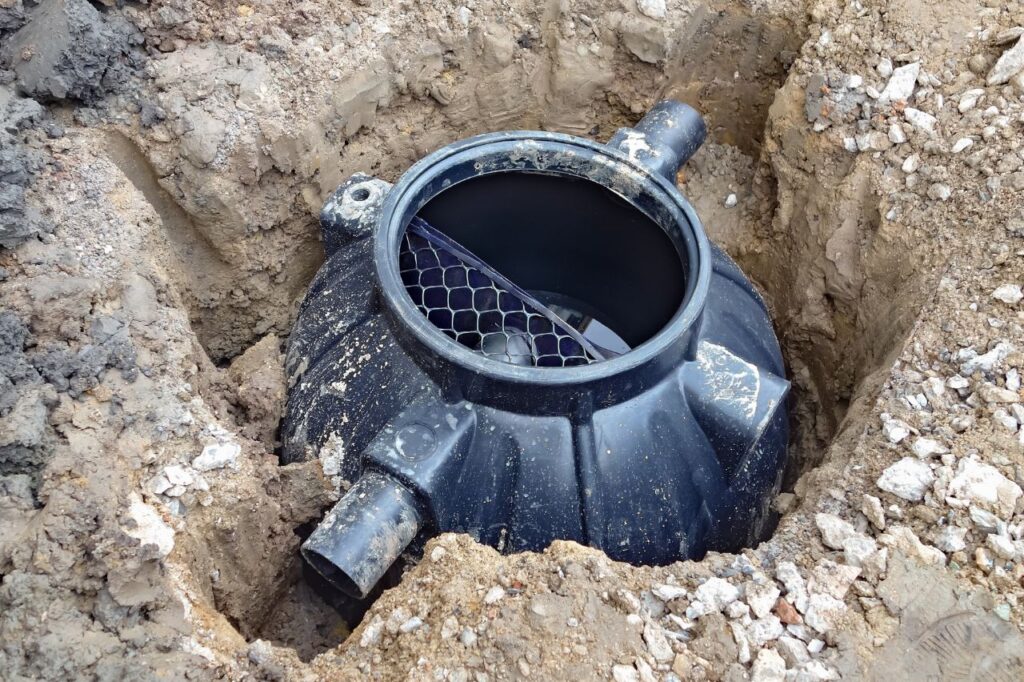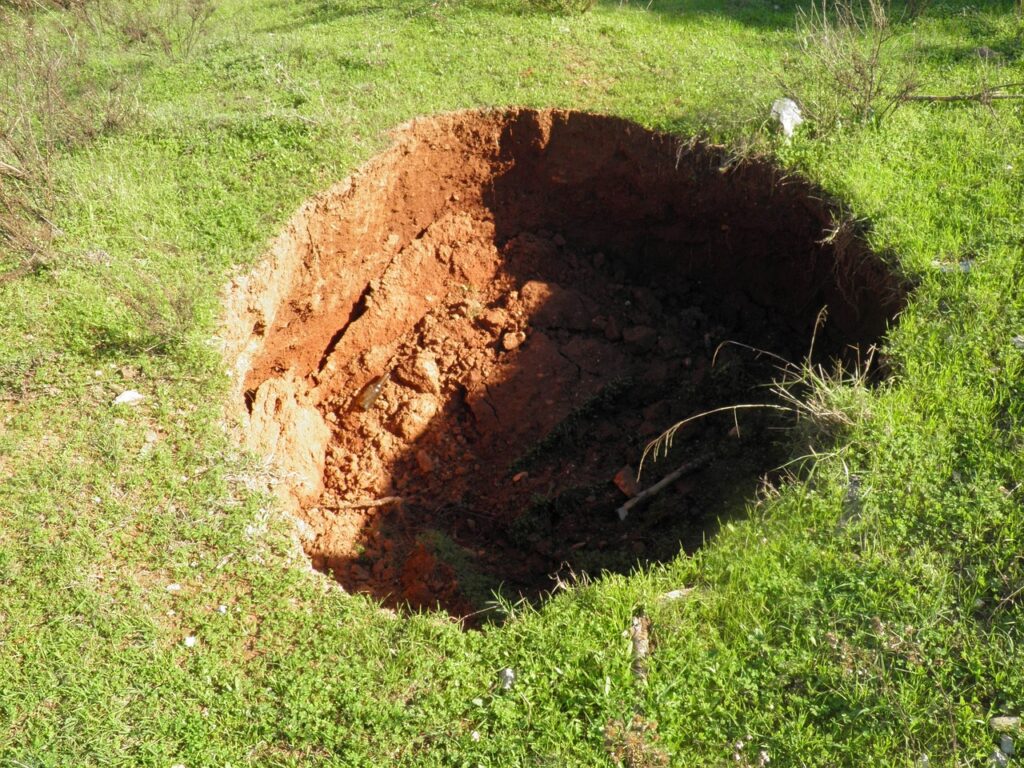Sinkholes are becoming an increasingly common phenomenon in many parts of the world.
These sudden and unexpected depressions in the ground can cause extensive damage to property and infrastructure and pose a serious threat to public safety.
While natural factors such as geology and weather can contribute to the formation of sinkholes, human activities can also play a significant role.
One of the most significant human factors is the use of septic systems.
When septic systems fail or are poorly maintained, they can lead to sinkhole formation and other environmental hazards.
In this article, we’ll take a closer look at the link between sinkholes and septic systems and explore some of the steps that homeowners and communities can take to mitigate the risks.
Whether you’re a homeowner, a community planner, or simply someone interested in environmental issues, understanding the connection between sinkholes and septic systems is crucial. So, let’s dive in!
Key Takeaways:
- Sinkholes can form naturally or be triggered by human activities such as mining, drilling, and construction.
- Poorly maintained or failing septic systems can contribute to sinkhole formation and other environmental hazards.
- Septic system failures can lead to soil erosion, creation of voids, and chemical changes that weaken the soil and increase the risk of sinkhole formation.
- Signs of sinkhole activity near septic systems include depressions or holes in the ground, cracks in walls or foundations, uneven ground or sinking areas, leaning trees or fence posts, and changes in nearby bodies of water.
- Regulations and laws exist in many areas to regulate septic systems and protect against sinkhole formation.
What causes sinkholes?
Sinkholes are depressions or holes in the ground that can range in size from a few feet to several acres.
They are caused by the collapse of the surface layer of soil or rock into an underlying cavity or void.
Sinkholes can form naturally over time due to geological processes such as the dissolution of limestone or other soluble rocks, erosion, and weathering.
However, human activities such as mining, drilling, and construction can also contribute to sinkhole formation by altering the natural geology of an area.
Sinkholes can form slowly over time, or they can occur suddenly and without warning.
They can be triggered by heavy rainfall, changes in groundwater levels, or seismic activity.
In areas with a high risk of sinkholes, it’s important to be aware of the signs of sinkhole activity and take steps to prevent and mitigate the risks.
How septic systems contribute to sinkhole formation
Septic systems are a common method of wastewater treatment in rural and suburban areas.
They work by collecting and treating household wastewater in a septic tank, where the solids settle and are broken down by bacteria.
The liquid effluent is then discharged into a drain field, where it percolates into the soil and is further treated by natural processes.
However, when septic systems fail or are poorly maintained, they can lead to sinkhole formation and other environmental hazards.
One of the main ways that septic systems contribute to sinkhole formation is through the erosion of soil and the creation of voids underground.
When a septic system is not functioning properly, the wastewater can seep out of the tank and into the surrounding soil.
This can cause the soil to become saturated and weakened, leading to the formation of voids and cavities underground.
Over time, these voids can grow larger and eventually collapse, creating a sinkhole on the surface.
In addition, the chemicals and nutrients in the wastewater can also contribute to sinkhole formation by altering the chemistry of the soil and groundwater.
This can lead to the dissolution of limestone and other soluble rocks, further weakening the soil and increasing the risk of sinkhole formation.

Signs of sinkhole activity near your septic system
If you have a septic system on your property, it’s important to be aware of the signs of sinkhole activity. Some of the most common signs include:
– Depressions or holes in the ground
– Cracks in walls or foundations
– Uneven ground or sinking areas
– Trees or fence posts that are leaning or tilting
– Changes in the appearance or structure of nearby bodies of water
If you notice any of these signs near your septic system, it’s important to take action right away.
Contact a professional septic system inspector or geologist to assess the situation and recommend appropriate measures to prevent further sinkhole formation.
Prevention and maintenance tips for septic systems to avoid sinkholes
Preventing sinkhole formation near septic systems requires proper installation, maintenance, and management.
Here are some tips to help you avoid sinkholes on your property:
1. Have your septic system inspected regularly by a professional to ensure that it is functioning properly and not contributing to sinkhole formation.
2. Avoid planting trees or other vegetation near your septic system, as their roots can penetrate the soil and create voids.
3. Do not dispose of hazardous chemicals or other pollutants in your septic system, as they can contaminate the soil and groundwater and contribute to sinkhole formation.
4. Do not park heavy vehicles or equipment on the ground above your septic system, as this can cause soil compaction and damage to the system.
5. Install a septic system that is appropriate for your property and meets local regulations and standards.
By following these tips, you can help prevent sinkhole formation near your septic system and protect your property from damage.
Regulations and laws regarding septic systems and sinkholes
Many states and local governments have regulations and laws in place to protect against sinkhole formation and other environmental hazards related to septic systems.
These regulations typically require regular inspections and maintenance of septic systems, as well as proper installation and management.
In addition, some states require homeowners to carry sinkhole insurance to cover damage caused by sinkhole formation.
If you live in an area with a high risk of sinkhole activity, it’s important to be aware of these regulations and laws and to comply with them to avoid fines and penalties.
The importance of professional inspection and repair for septic systems
Professional inspection and repair of septic systems is crucial for preventing sinkhole formation and other environmental hazards.
A trained and experienced septic system inspector can identify problems with your system and recommend appropriate measures to prevent further damage.
If your septic system is showing signs of failure or is not functioning properly, it’s important to contact a professional repair service right away.

Ignoring the problem can lead to further damage and increased risk of sinkhole formation.
Examples of sinkhole incidents caused by septic systems
There have been many incidents of sinkhole formation caused by septic systems in recent years.
In 2013, a sinkhole formed in Florida that swallowed a man while he was sleeping in his home.
The sinkhole was caused by the failure of a nearby septic system, which created a void under the man’s house.
In 2018, a sinkhole formed in Pennsylvania that destroyed a home and damaged several others.
The sinkhole was caused by the failure of a septic system on the property, which created a void under the ground.
These incidents highlight the importance of proper installation, maintenance, and management of septic systems to prevent sinkhole formation and protect public safety.
Insurance coverage for sinkhole damage related to septic systems
If you live in an area with a high risk of sinkhole activity, it’s important to consider sinkhole insurance to protect your property from damage.
Many insurance companies offer sinkhole insurance as an add-on to homeowners’ insurance, and some states require homeowners to carry sinkhole insurance as a condition of their mortgage.
Sinkhole insurance typically covers damage caused by sinkhole formation, including damage to your home, personal property, and landscaping.
However, it’s important to read the fine print and understand what is and is not covered by your policy.
Conclusion: Staying informed and proactive in preventing sinkholes and protecting your property.
In conclusion, sinkholes are a serious threat to public safety and property, and septic systems can contribute to their formation.
By understanding the link between sinkholes and septic systems and taking proactive measures to prevent and mitigate the risks, homeowners and communities can protect themselves from sinkhole damage and other environmental hazards.
If you have a septic system on your property, it’s important to have it inspected regularly by a professional and to follow proper maintenance and management practices.
By doing so, you can help prevent sinkhole formation and protect your property from damage.
Remember, staying informed and proactive is the key to preventing sinkholes and protecting your property. So take the necessary steps today and stay safe!

